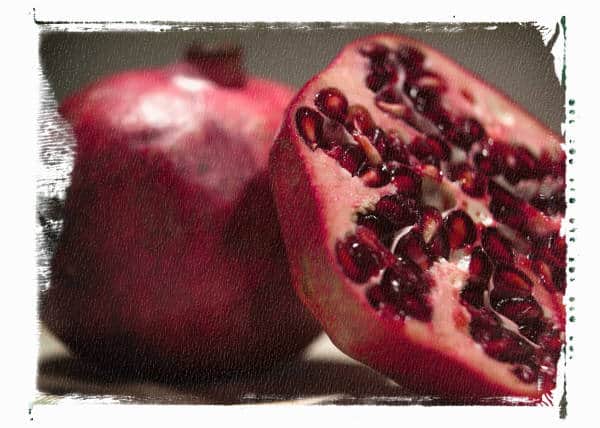It’s the end of the month but never too late to talk about the Garnet which is January’s birthstone– and what a beauty it is! Looking at a garnet reminds us of a succulent pomegranate seed, with its deep, dark red color, and watery-like depth.
 In fact, the word “garnet” comes from the Latin word “granatus,” meaning “seed.” But don’t bite into a garnet, because at Moh’s hardness 6.5 to 7.5, it will definitely damage the teeth!
In fact, the word “garnet” comes from the Latin word “granatus,” meaning “seed.” But don’t bite into a garnet, because at Moh’s hardness 6.5 to 7.5, it will definitely damage the teeth!
Like the pomegranate, the garnet is linked to loyalty in love, fertility and righteousness, making it the perfect stone for an engagement ring. There are many myths and legends surrounding the garnet. One Biblical legend is that Noah hung this gem on the ark to light his way through the dark and stormy nights of God’s wrath. A Greek myth linked to the garnet is the story of the young goddess of sunshine, Persephone, who was abducted by Hades, god of the underworld. Hades eventually released Persephone, but not before he offered her some pomegranate seeds, which guaranteed her return to him.
First mined in Sri Lanka over 2,500 years ago, the garnet is also found in Africa, Australia, India, Russia, South America; and in the United States, in Arizona and Idaho. Although most commonly known as a red gemstone, the garnet comes in a variety of other hues, including muted yellows, vibrant oranges, rosy pinks, lime greens, and violets—a virtual bouquet of colors. This diversity is due to unique combinations of elements within each particular gem, such as iron, calcium, and manganese.
Because the color of the garnet has long been associated with blood, it was considered an incomparable cure for all disorders of the blood. Since anger causes the face to flush, the garnet was used as a charm against the effects of anger and was said to be a calming influence and even a remedy for mental instability. Soldiers in combat wore garnets for protection against battle wounds.
The garnet continues to be the protective gem of journeyers, and a gift of a garnet bracelet is thought to be symbolic of not only the desire for a loved one’s safe travel, but a speedy return home.
So although it is January’s birthstone, its color and beauty – compared to the heart of a flame — is loved by many.
The Garnet is far from being only a winter gem, with its brilliance and multitude of colors, is truly one for any season.



